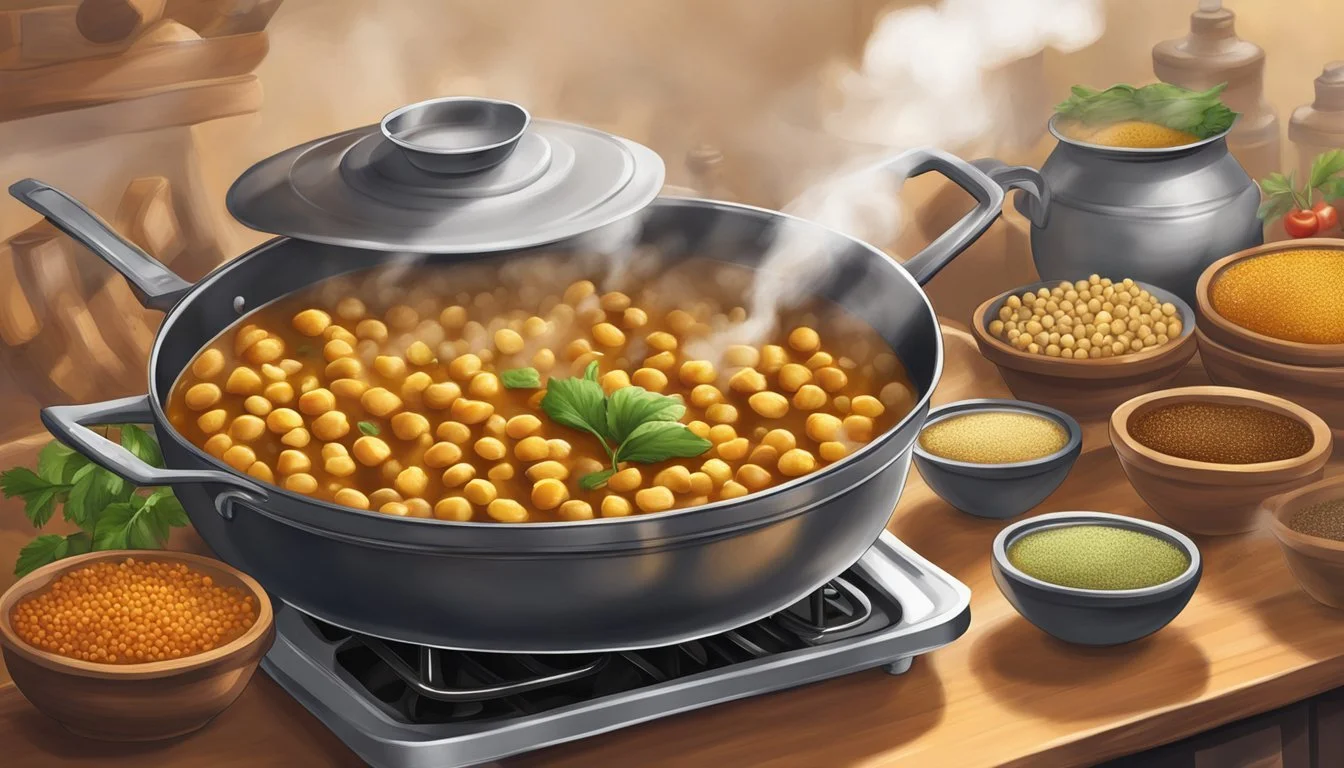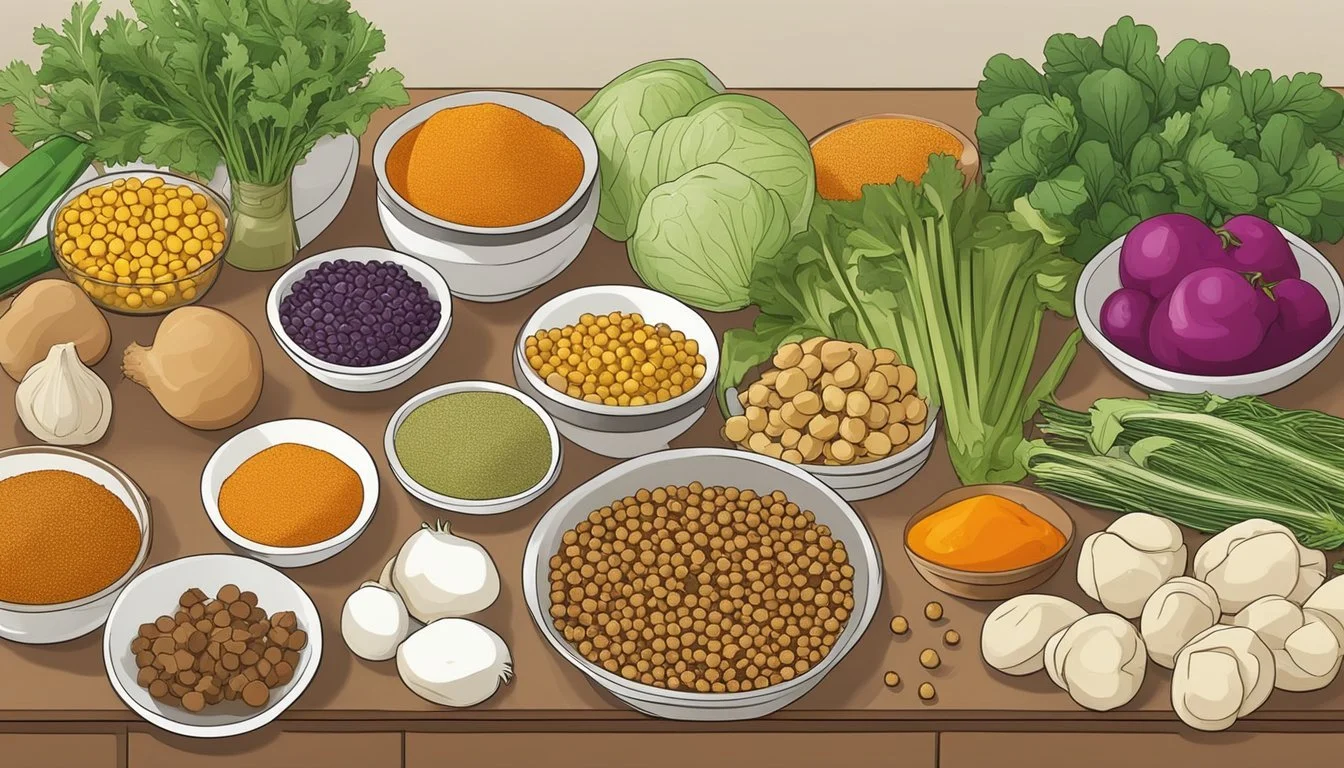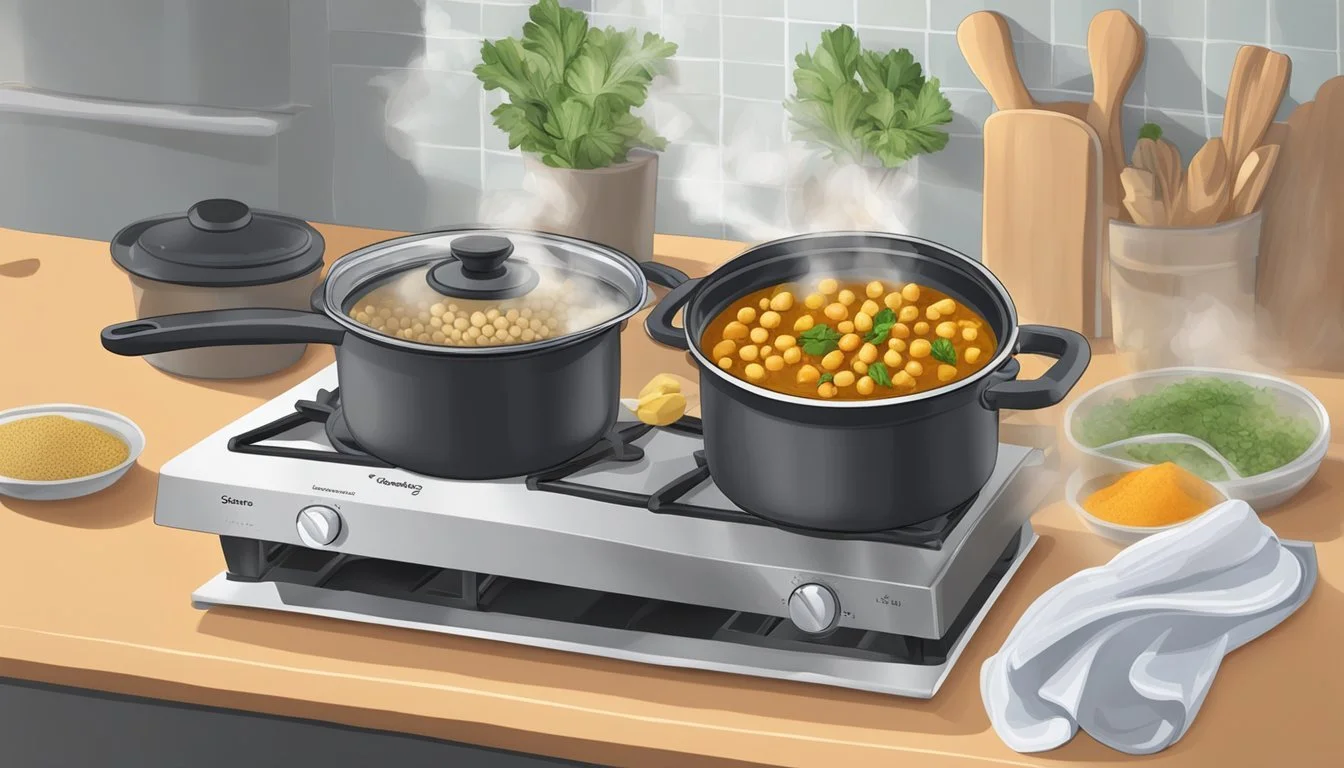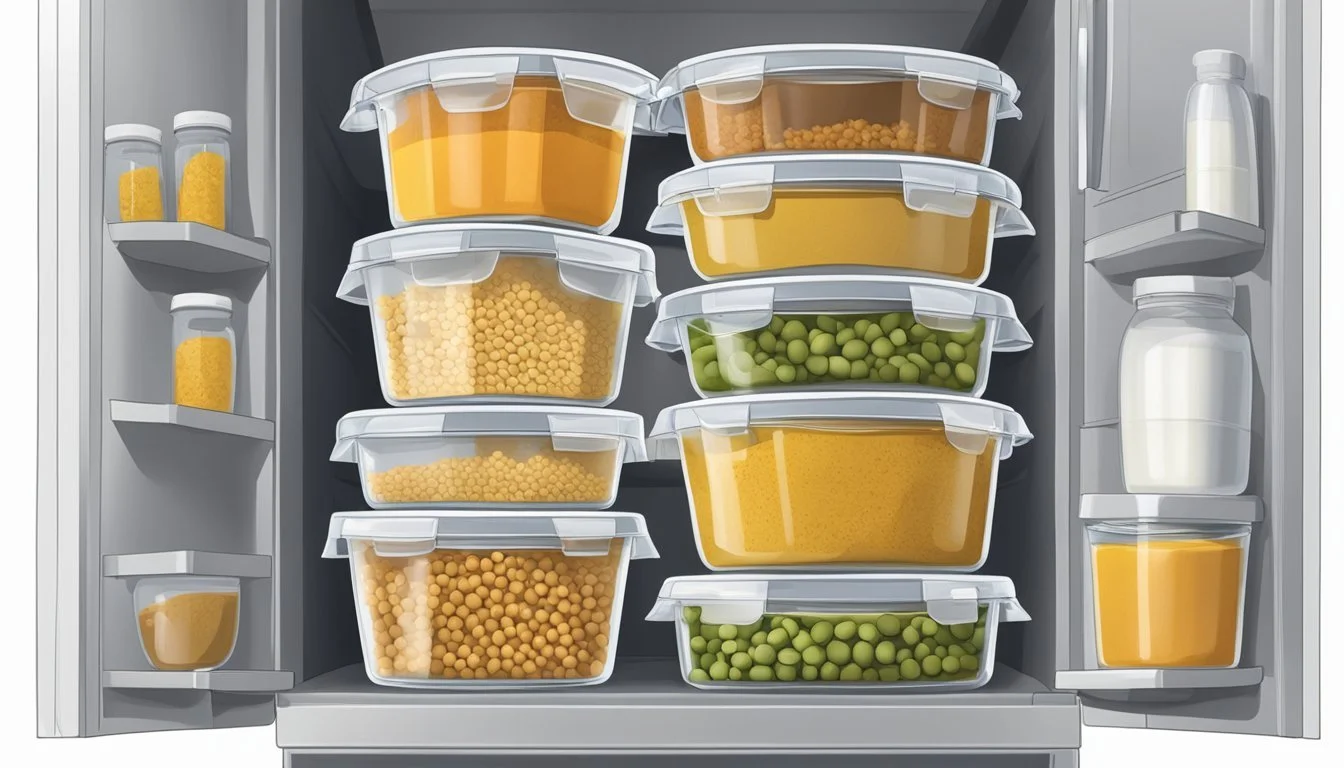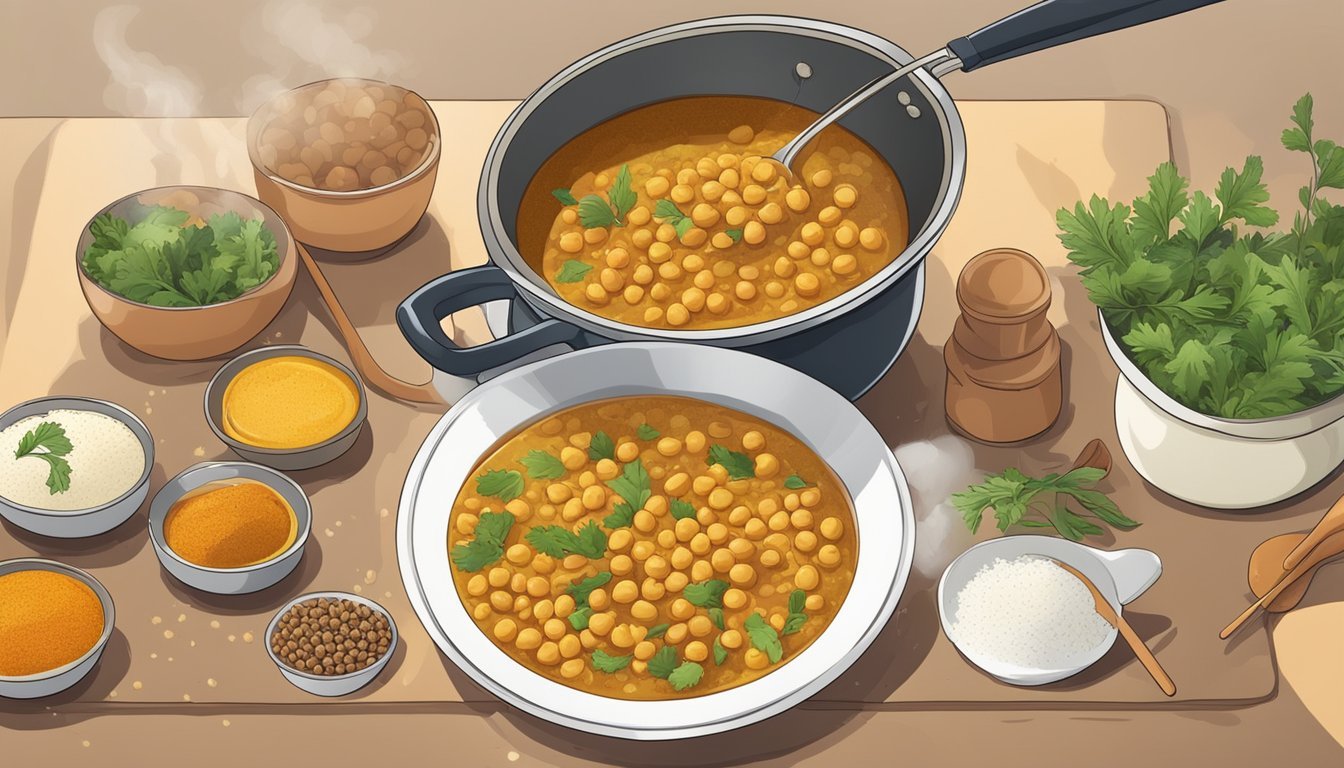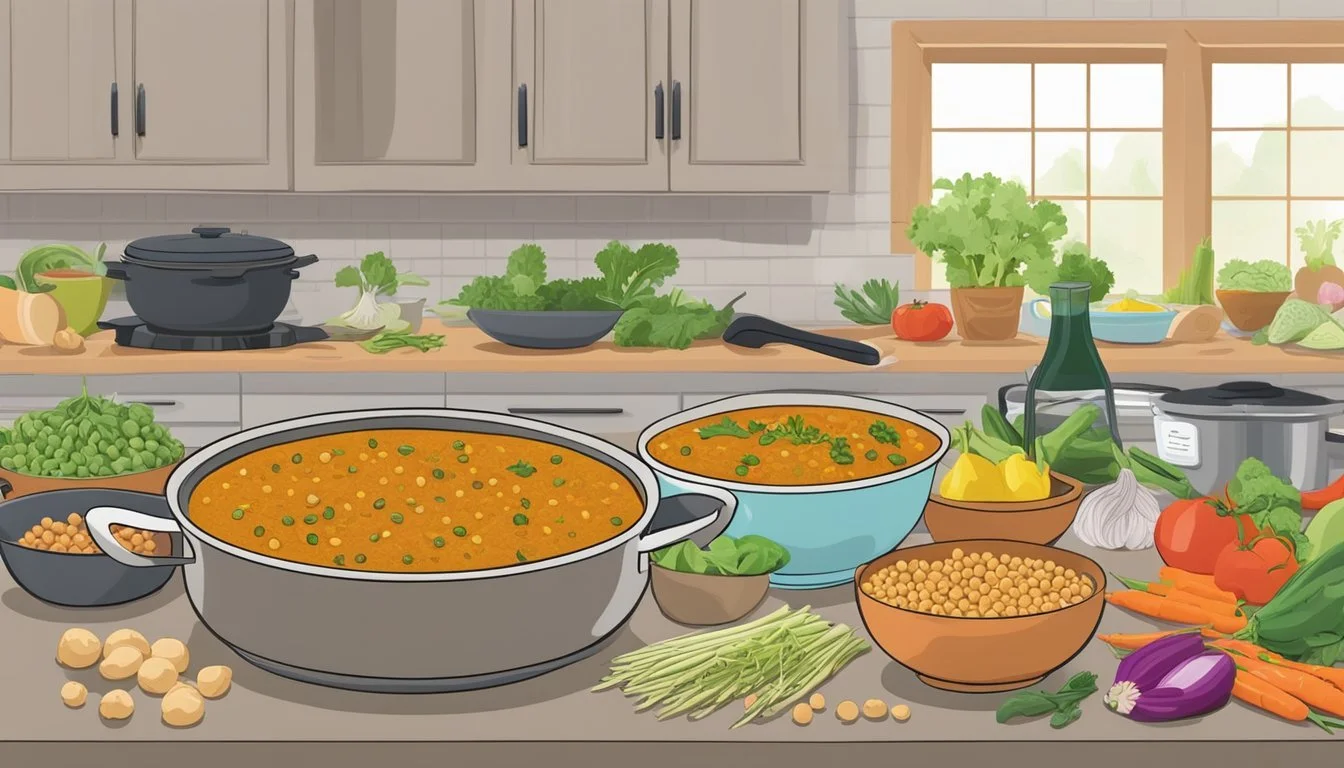How Long Does Chickpea Curry Last?
Storage Tips and Shelf Life
Chickpea curry is a beloved dish, favored for its robust flavors and versatility. A staple for many as a quick and easy weeknight dinner, it not only satisfies the taste buds but also provides a host of nutritional benefits. Whether you're preparing it fresh for a meal or cooking in bulk for future consumption, chickpea curry can last in the refrigerator for about five to seven days.
When properly stored in an airtight container, this healthy meal remains delicious and safe to eat over the course of a week. For those who prefer to prepare their meals in advance, chickpea curry is an excellent candidate for freezing. You can keep it in a freezer-safe bag for up to three months, ensuring you always have a hearty, nutritious option ready to go.
This quality makes chickpea curry an ideal choice for busy individuals who still wish to enjoy home-cooked dinners without the daily hassle. Its ability to retain flavor and consistency even after refrigeration or freezing sets it apart from other dishes, making it a reliable component of any meal plan.
Importance of Ingredients in Chickpea Curry
In chickpea curry, each ingredient plays a crucial role in achieving the desired flavors and textures. The following sections will detail the base ingredients, spices, and additional vegetables and proteins usually found in this dish.
Base Ingredients and Their Roles
The foundation of chickpea curry involves several key base ingredients. Chickpeas serve as the main protein source and provide a satisfying, hearty texture.
Onion, garlic, and fresh ginger are typically sautéed in olive oil to create a flavorful base. Crushed tomatoes or tomato paste add acidity and depth, while coconut milk lends a creamy texture that balances the spices.
Vegetable broth is often used to adjust consistency and add umami.
Spices and Seasonings for Flavor Development
The rich flavor profile of chickpea curry is attributed to a blend of spices. Common spices include cumin, turmeric, garam masala, chili powder, and coriander.
These spices layer the dish with warmth, spice, and a touch of heat.
Alternatives like chana masala blend also work well. Salt and pepper are essential to enhance and balance the overall flavor, while lime juice can be added for a hint of citrusy brightness.
Additional Vegetables and Protein Options
Additional ingredients like spinach, cauliflower, and other vegetables such as bell peppers add nutritional value and texture variation.
Spinach provides a fresh, green element that complements the curry's richness, while cauliflower adds bulk and absorbs flavors well. Protein options can also vary.
Besides chickpeas, lentils or tofu can be used to offer alternative protein sources and keep the dish vegetarian or vegan. Fresh cilantro often garnishes the curry, adding a burst of freshness to each bite.
Cooking Methods for Chickpea Curry
Different methods can be employed to cook chickpea curry, ensuring a flavorful and satisfying result. These methods include careful preparation of ingredients, simmering the curry to enhance flavors, and considering vegan and vegetarian variations.
Preparation Techniques for Ingredients
Proper preparation of ingredients is crucial. Onions should be sautéed until golden brown, allowing their sweetness to develop. Garlic and ginger, often minced, should also be cooked briefly to release their aromatic qualities.
The spices used, such as curry powder, cumin, and garam masala, should be toasted lightly in the pan to intensify their flavors. For canned chickpeas, it is essential to drain and rinse them to remove excess sodium and any metallic taste. Fresh vegetables like spinach can be added at the end to maintain their texture and color.
Simmering Curries for Enhanced Flavors
Simmering the curry gently is key to achieving deep, rich flavors. Once the spices are added, crushed tomatoes and coconut milk create a base for the curry. Bringing this mixture to a boil and then reducing it to a simmer allows the flavors to meld together harmoniously.
Chickpeas and other vegetables should be added and simmered until tender. This slow cooking process not only enhances the taste but also thickens the curry. Stirring occasionally helps prevent sticking and ensures even cooking.
Vegan and Vegetarian Cooking Variations
Chickpea curry is naturally suited for vegan and vegetarian diets.
Replacing or omitting dairy ingredients like butter with plant-based options such as coconut oil can easily adapt traditional recipes. Adding tofu or cauliflower can provide additional texture and nutrients. For added creaminess, cashew cream or almond milk are excellent substitutes for dairy.
To boost the flavor, include a variety of vegetables such as carrots, bell peppers, and spinach. Spices and seasonings can remain the same; ensure they are balanced to suit your taste preferences. This versatile nature of chickpea curry makes it ideal for accommodating diverse dietary needs and preferences.
Storage Recommendations for Chickpea Curry
Proper storage of chickpea curry ensures it lasts longer while maintaining quality and safety. Key considerations include refrigeration, freezing, and adhering to food safety practices.
Refrigerator Storage Life
Chickpea curry can be stored in the fridge for around 4-5 days. Ensure the curry is completely cooled before refrigeration to avoid condensation, which can lead to spoilage. Store it in an air-tight container to maintain freshness and prevent odors from permeating the curry. Ensure the refrigerator is set to the proper temperature of 40°F (4°C) or below to inhibit bacterial growth.
Freezing and Thawing Curry
For longer storage, freeze chickpea curry. Begin by cooling the curry completely before transferring it to freezer-safe air-tight containers or heavy-duty freezer bags. When frozen, chickpea curry can last for up to 2-3 months. Label the containers with the date of freezing for easy tracking. To thaw, move the container from the freezer to the fridge the night before; this gradual thawing helps maintain texture and flavor. Reheat thoroughly before serving.
Best Practices for Food Safety
To ensure the safety of leftovers, follow these steps:
Cool Quickly: Spread the curry in a shallow container to cool it quickly.
Avoid Cross-Contamination: Use clean utensils and containers.
Check Temperatures: Ensure the fridge and freezer are at safe temperatures.
Reheat Properly: Bring the curry to a boil when reheating to kill potential bacteria.
Following these storage recommendations will help keep chickpea curry fresh and safe, maximizing its shelf life and quality.
Pairing Chickpea Curry with Side Dishes
Chickpea curry pairs well with a variety of sides that complement its flavors and textures. From fragrant rice to versatile bread and refreshing salads, each option enhances the meal in unique ways.
Choosing the Right Type of Rice
Rice is a staple accompaniment for chickpea curry, with basmati rice being a popular choice. Its long grains and aromatic nature pair perfectly with the rich and spicy curry. Steamed basmati rice absorbs the curry sauce well, balancing the dish's flavors.
For those seeking a different texture, try jasmine rice, which has a slightly sticky consistency and a subtle fragrance. Brown rice offers a healthier alternative, adding a nutty flavor and providing more fiber and nutrients.
Complementing with Bread Varieties
Bread varieties make excellent sides for chickpea curry, providing an easy way to scoop up the flavorful sauce. Naan bread is a classic choice; its soft, pillowy texture complements the curry beautifully.
Garlic naan adds an extra layer of flavor with its aromatic garlic butter. Poppadoms, crispy and light, offer a contrasting texture and are great for dipping. Roti or chapati are healthier, whole wheat options that still deliver the essential characteristic of Indian bread.
Salad Pairings for a Balanced Meal
A fresh salad can balance the richness of chickpea curry, providing a refreshing contrast. Cucumber raita, a yogurt-based salad with cucumbers, offers a cooling effect against the curry's heat.
Kachumber salad, made with chopped cucumbers, tomatoes, and onions, adds a fresh, crunchy element to the meal. Mixed greens with a light lemon vinaigrette can offer a simple yet effective way to refresh the palate.
Each of these salads invites balance and contrast, ensuring the meal is both delicious and satisfying.
Nutritional Profile of Chickpea Curry
Chickpea curry is often praised for its health benefits and versatility.
Protein: Chickpeas are a significant source of plant-based protein. One cup of cooked chickpeas contains around 15 grams of protein, making it an excellent choice for vegetarians and vegans.
Fiber: Chickpeas are high in dietary fiber, aiding in digestion and promoting a feeling of fullness. A single serving can provide around 12.5 grams of fiber.
Low Sugar: Chickpea curry generally has low sugar content, especially when prepared without added sweeteners. This makes it a suitable option for those monitoring their sugar intake.
Low Fat: This dish is typically low in fat, particularly if prepared with minimal oil or using healthier fat sources like olive oil. Coconut milk variants do add some fat but primarily the healthier kind.
Calories: Depending on the ingredients used, a standard serving of chickpea curry usually contains between 250 to 400 calories. This can vary based on the inclusion of items like coconut milk or ghee.
Dietary Considerations: Being naturally vegetarian and often vegan, chickpea curry caters to various dietary needs. It's also gluten-free, making it accessible to those with gluten intolerance.
Micronutrients: Chickpeas are rich in essential vitamins and minerals such as folate, iron, magnesium, and potassium. These nutrients support overall health and well-being.
Healthy: Combined with vegetables and spices like turmeric, cumin, and garlic, the dish is packed with antioxidants and beneficial compounds, contributing to a well-rounded, healthy diet.
Serving and Presentation Tips
Flavor Profiles
Highlight the rich flavors in Chickpea Curry by serving it with fresh lime wedges. A squeeze of lime can enhance the taste, adding a fresh citrus note.
Garnishing
Top your curry with freshly chopped cilantro. This not only adds a pop of color but also complements the flavors perfectly.
Portions
Serve the Chickpea Curry in individual bowls to create an inviting presentation. Portion control helps in maintaining a balanced diet.
Rice Pairing
Pair the curry with Basmati rice or brown rice. This can provide a complete and satisfying meal.
Vegan-Friendly
Ensure to label the dish as vegan-friendly, especially if sharing the recipe on social media platforms like Instagram, Facebook, Pinterest, or YouTube.
Side Dishes
Offer side dishes such as naan bread or pappadums. These can enhance the dining experience and complement the curry flavors.
Visual Appeal
Make the dish Instagram-worthy by adding garnishes like a sprinkle of red chili flakes or sesame seeds. Presentation matters when sharing food photos online.
Dishes and Tableware
Serve in plain white or lightly-colored bowls to let the vibrant colors of the curry stand out. This creates a visually appealing contrast.
Customer Reviews
Encourage guests to leave a review after tasting. Positive feedback can help in refining the recipe and improving future servings.
Creating a Social Media Buzz
Capture the beautifully presented Chickpea Curry and share it on social media. Tagging relevant hashtags and profiles can generate interest and attract attention.
Customizing the Curry Recipe
Customizing a chickpea curry allows for a variety of flavors and textures to suit different tastes. Adding garam masala and other warm spices can significantly enhance the dish.
One can make the curry more spicy by incorporating ingredients like sriracha or chili powder. Alternatively, for a milder version, it’s possible to use light coconut milk instead of full-fat coconut milk.
For those seeking a rich flavor, full-fat coconut milk should be used, while light coconut milk offers a lighter texture. Adding spinach can provide a nutritious boost and create a more vibrant dish.
Optional ingredients like honey can balance the flavors, and adding lentils can vary the texture. Canned chickpeas make this recipe convenient, but fresh chickpeas are a great alternative for texture.
For meal prep, the dish can be served with rice or alongside salads. It’s a versatile dish that can accommodate a range of dietary preferences, from vegan to those looking for a hearty meal.
Customizations:
Ingredient Customization Spice level Add sriracha or chili powder Creaminess Use full-fat or light coconut milk Texture variation Add lentils or spinach Sweetness Incorporate honey Convenience Use canned chickpeas
This flexibility makes it easy to adapt the coconut chickpea curry recipe to personal preferences while maintaining its delicious and flavorful essence.
Planning Meals Around Chickpea Curry
Chickpea curry serves as a versatile base for numerous meals. For those who enjoy meal prepping, it's a quick and easy solution.
Meal Prep and Storage:
Chickpea curry can be stored in an airtight container in the fridge for up to 4 days. For longer storage, freeze portions for up to 3 months.
Using Leftovers:
Incorporate leftovers into various dishes. Add them to wraps or use them as a topping for baked potatoes.
Quick Weeknight Dinners:
Reheat chickpea curry in minutes for a fast meal. Pair it with a side of rice, naan, or a simple green salad.
Prep Time and Cook Time:
With a prep time of around 10 minutes and a cook time of 20-30 minutes, chickpea curry is perfect for busy evenings.
Recipe Variations:
Explore different versions by adding vegetables like spinach or bell peppers. Adjust spices to suit personal taste.
Review:
Many find chickpea curry to be a reliable and tasty option for busy schedules. Its ability to stay fresh and flavorful over several days makes it a favorite for meal planning.

